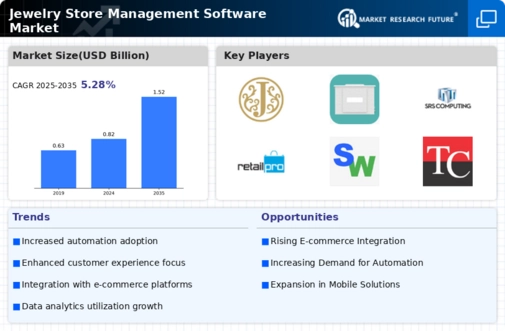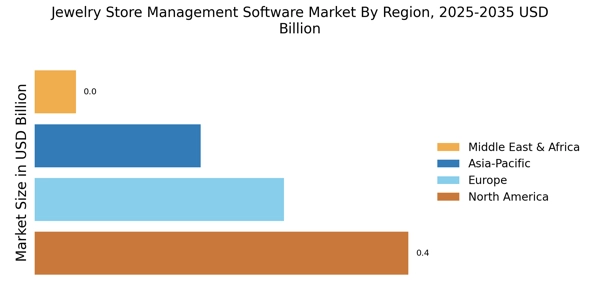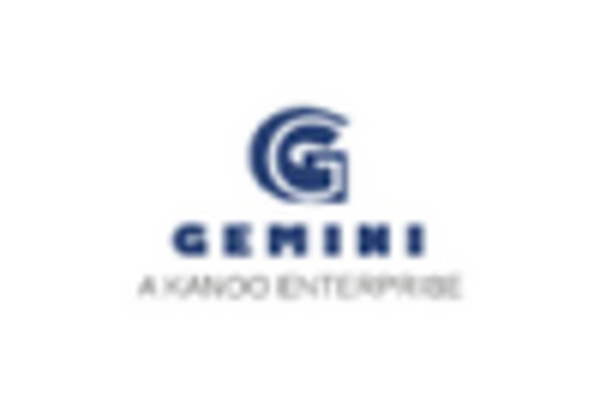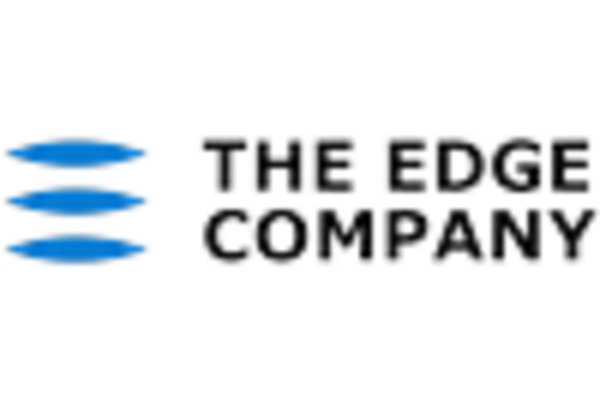Focus on Data Analytics
Data analytics is emerging as a pivotal driver in the Jewelry Store Management Software Market. Retailers are recognizing the value of data-driven decision-making to enhance customer engagement and optimize sales strategies. Software solutions that provide robust analytics capabilities enable retailers to gain insights into customer preferences, purchasing patterns, and market trends. This analytical approach can lead to improved marketing strategies and inventory decisions. Current trends suggest that businesses leveraging data analytics can increase their sales by up to 25%. Thus, the demand for software that incorporates advanced analytics features is expected to rise.
Rising Demand for Automation
The Jewelry Store Management Software Market is experiencing a notable increase in demand for automation solutions. Retailers are increasingly seeking to streamline operations, reduce manual errors, and enhance efficiency. Automation tools within these software solutions can manage inventory, sales, and customer relationships seamlessly. According to recent data, the market for automation in retail is projected to grow significantly, with a compound annual growth rate of approximately 15% over the next five years. This trend indicates that jewelry retailers are prioritizing technology investments to remain competitive, thereby driving the adoption of specialized management software.
Enhanced Inventory Management
Effective inventory management is crucial in the Jewelry Store Management Software Market. Retailers face challenges in tracking stock levels, managing suppliers, and forecasting demand. Advanced software solutions offer features such as real-time inventory tracking and automated reordering processes. This capability is particularly vital in a sector where product turnover can be rapid. Recent statistics suggest that retailers utilizing sophisticated inventory management systems can reduce stock discrepancies by up to 30%. As a result, the demand for comprehensive management software that addresses these inventory challenges is likely to increase.
Growing E-commerce Integration
The integration of e-commerce functionalities within the Jewelry Store Management Software Market is becoming increasingly essential. As consumer preferences shift towards online shopping, jewelry retailers are compelled to adopt software that supports both in-store and online sales channels. This integration allows for a unified view of sales data, customer interactions, and inventory management. Reports indicate that e-commerce sales in the jewelry sector are expected to grow by over 20% annually. Consequently, software solutions that facilitate this dual-channel approach are likely to see heightened demand, reflecting the industry's adaptation to changing consumer behaviors.
Regulatory Compliance and Security
Regulatory compliance and data security are increasingly influencing the Jewelry Store Management Software Market. As regulations surrounding data protection and consumer privacy become more stringent, retailers must ensure that their management software adheres to these standards. Software solutions that offer robust security features and compliance tools are becoming essential for jewelry retailers. Recent findings indicate that businesses investing in compliance-focused software can mitigate risks associated with data breaches and legal penalties. Therefore, the emphasis on regulatory compliance is likely to drive the adoption of specialized management software in the jewelry sector.


















Leave a Comment